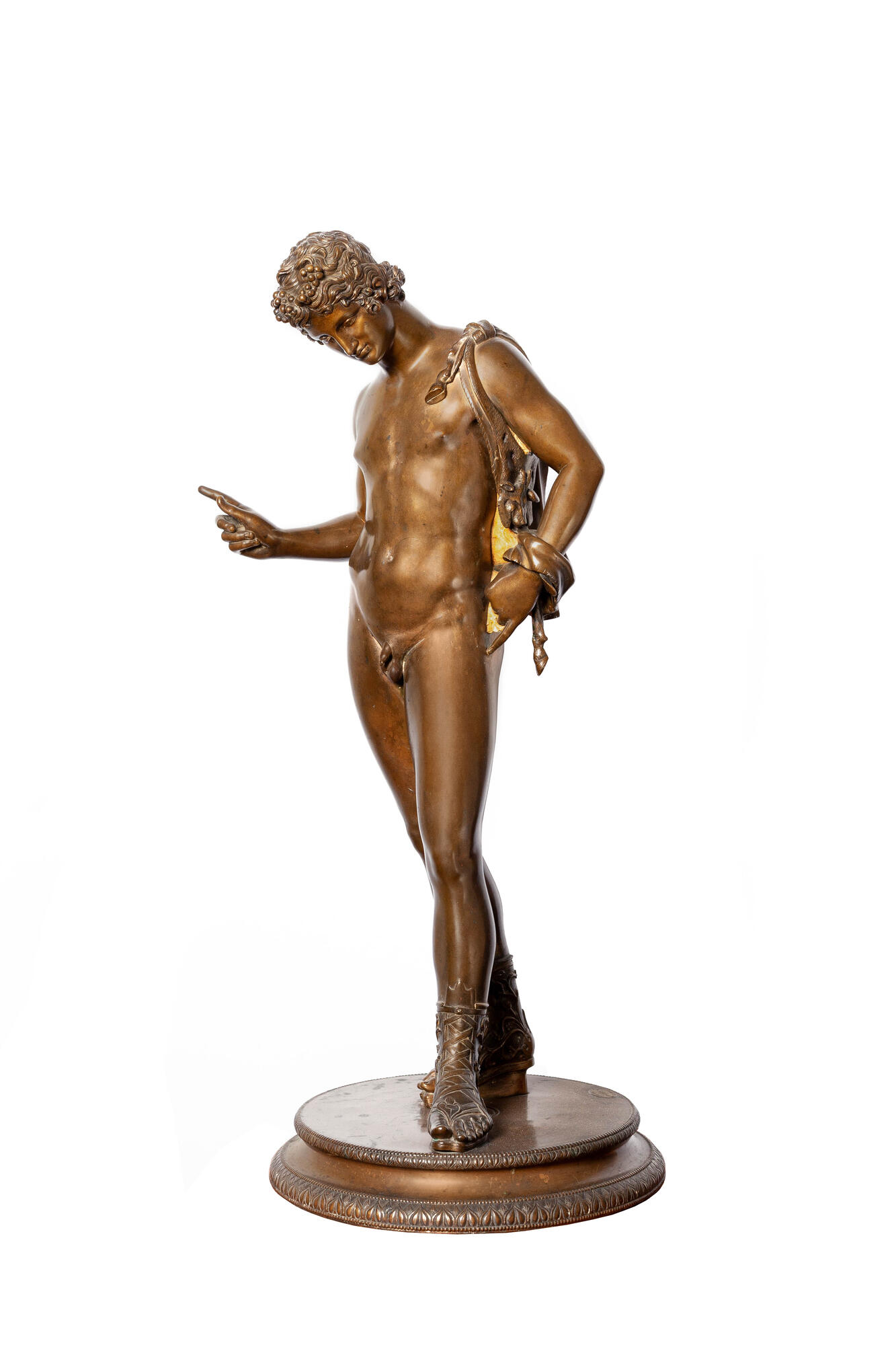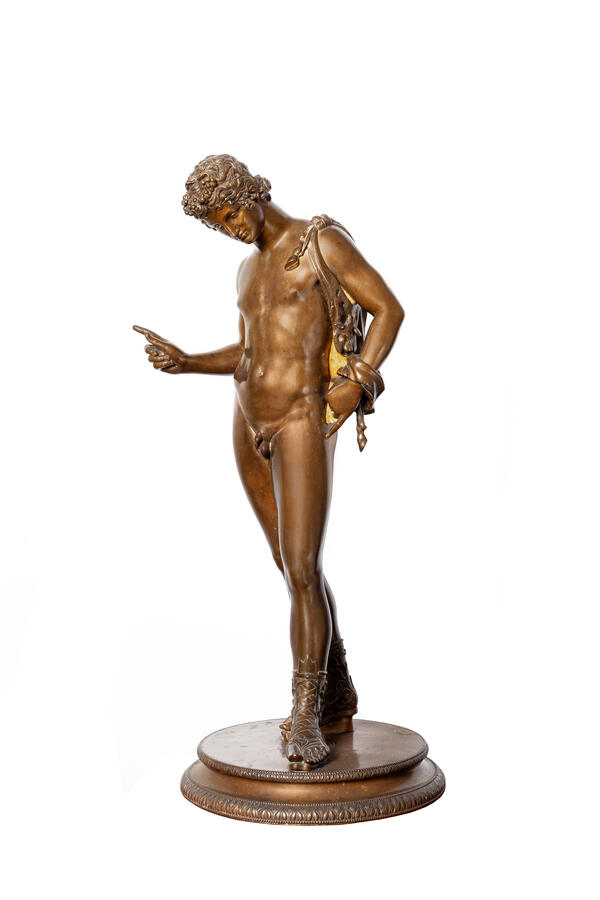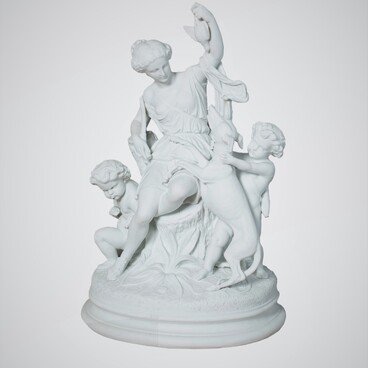Dionysus is the son of Zeus, the ancient Greek god of vegetation and winemaking, inspiration and religious ecstasy. He is depicted naked, only a goat skin tied in knots is thrown over his left shoulder. He also wears a wreath of ivy on his head.
The goat skin is a symbol of Dionysus, as well as ivy, grapes, a retinue of animals, satyrs and maenads. At first, he was considered the patron of the productive force of nature and the Greeks depicted him as a goat or a bull. Later, Dionysus became the god of winemaking, and then the god of poetry and theater: rural festivals in his honor were the initial driving force behind the development of the Greek theatre. Participants wore masks and goatskins. The solemn part of the festival gave birth to tragedy, the funny and playful one — to comedy.
The soft modelling of the musculature and the pose of Dionysus resemble the works of Praxiteles. Praxiteles was an ancient Greek 4th-century BC sculptor, the alleged author of the sculptures ‘Hermes with the infant Dionysus’ and ‘Apollo Sauroktonos, or the lizard-slayer’.
The sculpture displayed in the museum is a copy of the original discovered during archaeological excavations in Pompeii in 1862. The Pompeian statue immediately became famous due to its artistic merits. The sculpture’s base was lost, so it was installed on another one, also found in Pompeii.
It is housed in the National Archaeological Museum in Naples and was named Dionis ocosiddetto Narcisso — “Dionysus, also called Narcissus”. The ivy twigs and goatskin indicate that it is Dionysus, but for the beauty of the young man he was named Narcissus. Narcissus is a character of ancient Greek mythology, who became a symbol of narcissism and pride: he saw his own reflection in the river and fell in love with himself. In the museum catalogue, the sculpture is described as “the most beautiful bronze find discovered during excavations”.
After the archaeological digs in Pompeii, Italian masters did a lot to popularize the unearthed works. In the last quarter of the 19th century, the Sabatino de Angelis & fils workshop supplied museums and private collections with copies of sculptures, one of them in 1932 came from the capital to the Tomsk Museum.
The goat skin is a symbol of Dionysus, as well as ivy, grapes, a retinue of animals, satyrs and maenads. At first, he was considered the patron of the productive force of nature and the Greeks depicted him as a goat or a bull. Later, Dionysus became the god of winemaking, and then the god of poetry and theater: rural festivals in his honor were the initial driving force behind the development of the Greek theatre. Participants wore masks and goatskins. The solemn part of the festival gave birth to tragedy, the funny and playful one — to comedy.
The soft modelling of the musculature and the pose of Dionysus resemble the works of Praxiteles. Praxiteles was an ancient Greek 4th-century BC sculptor, the alleged author of the sculptures ‘Hermes with the infant Dionysus’ and ‘Apollo Sauroktonos, or the lizard-slayer’.
The sculpture displayed in the museum is a copy of the original discovered during archaeological excavations in Pompeii in 1862. The Pompeian statue immediately became famous due to its artistic merits. The sculpture’s base was lost, so it was installed on another one, also found in Pompeii.
It is housed in the National Archaeological Museum in Naples and was named Dionis ocosiddetto Narcisso — “Dionysus, also called Narcissus”. The ivy twigs and goatskin indicate that it is Dionysus, but for the beauty of the young man he was named Narcissus. Narcissus is a character of ancient Greek mythology, who became a symbol of narcissism and pride: he saw his own reflection in the river and fell in love with himself. In the museum catalogue, the sculpture is described as “the most beautiful bronze find discovered during excavations”.
After the archaeological digs in Pompeii, Italian masters did a lot to popularize the unearthed works. In the last quarter of the 19th century, the Sabatino de Angelis & fils workshop supplied museums and private collections with copies of sculptures, one of them in 1932 came from the capital to the Tomsk Museum.


